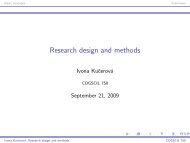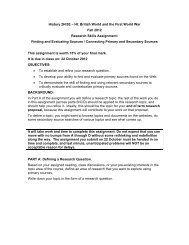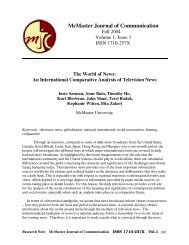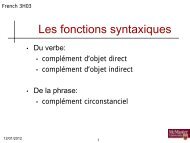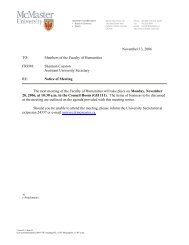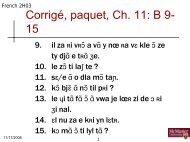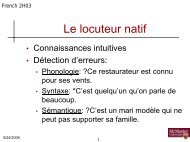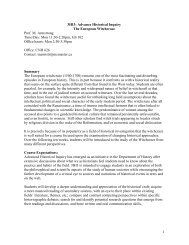The Syntax of Givenness Ivona Kucerová
The Syntax of Givenness Ivona Kucerová
The Syntax of Givenness Ivona Kucerová
You also want an ePaper? Increase the reach of your titles
YUMPU automatically turns print PDFs into web optimized ePapers that Google loves.
e. vP<br />
subject<br />
vP<br />
DO<br />
vP<br />
v<br />
VP<br />
v<br />
V<br />
DO<br />
VP<br />
V<br />
VP<br />
IO<br />
VP<br />
t DO<br />
VP<br />
t V<br />
t DO<br />
f. TP<br />
DO<br />
TP<br />
T-v-V<br />
vP<br />
Subject<br />
vP<br />
v<br />
VP<br />
v<br />
V<br />
DO<br />
VP<br />
t V<br />
VP<br />
IO<br />
VP<br />
t DO<br />
VP<br />
t V<br />
t DO<br />
So far so good. Let’s now look at a derivation <strong>of</strong> a clause where both the subject and<br />
the direct object are given, as in (6). <strong>The</strong> final word order is S-DO-V-IO. <strong>The</strong> first steps <strong>of</strong><br />
the derivation are identical with (10-a)–(10-d). What happens after the subject is merged,<br />
69





